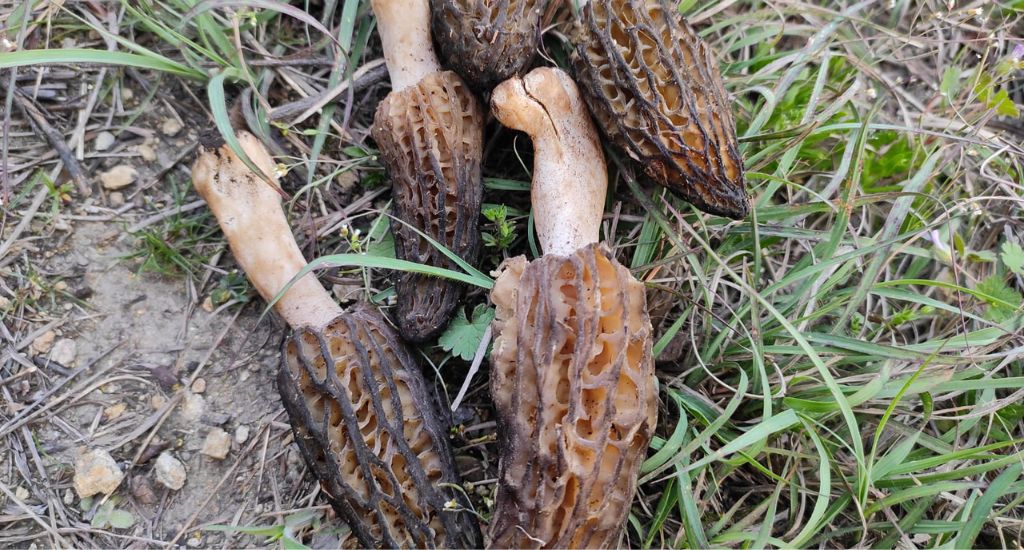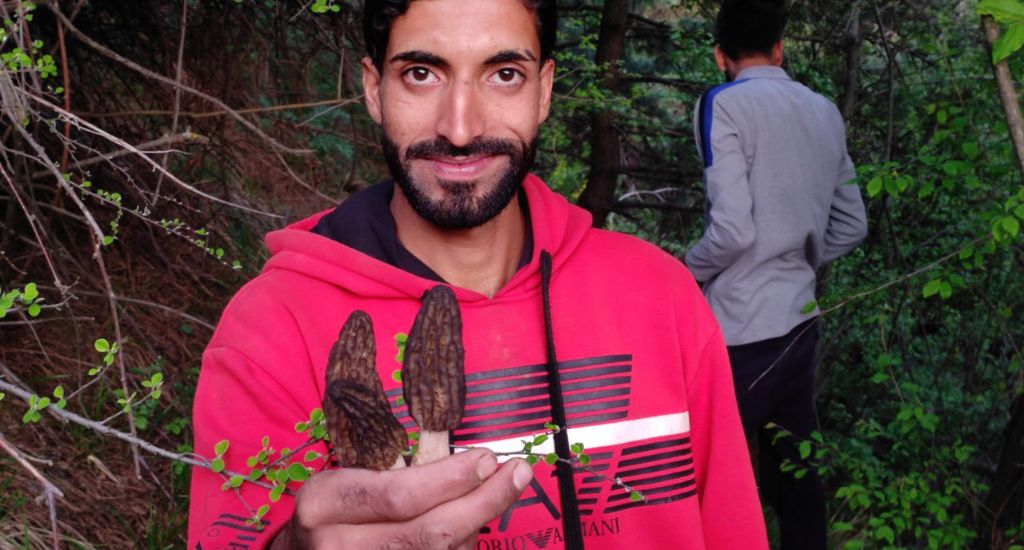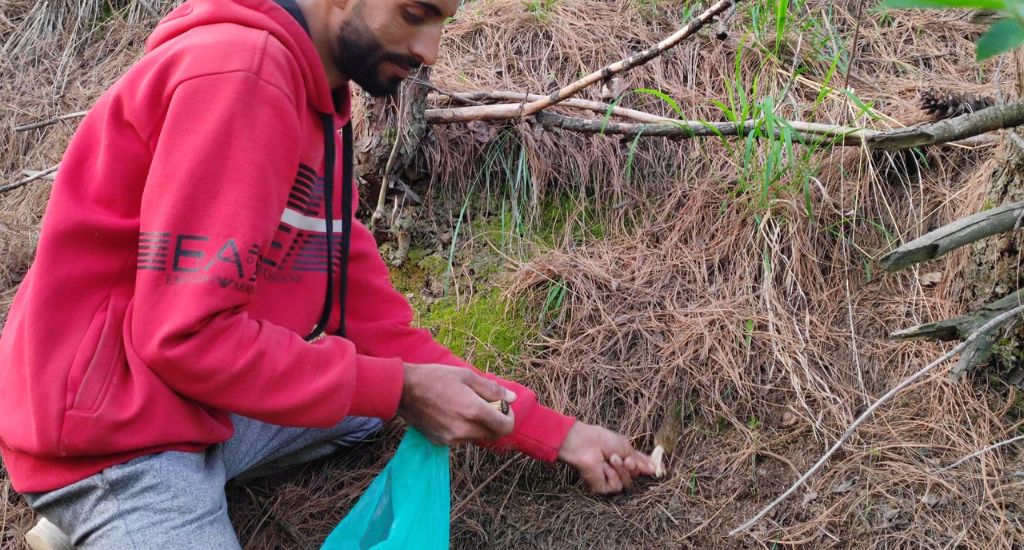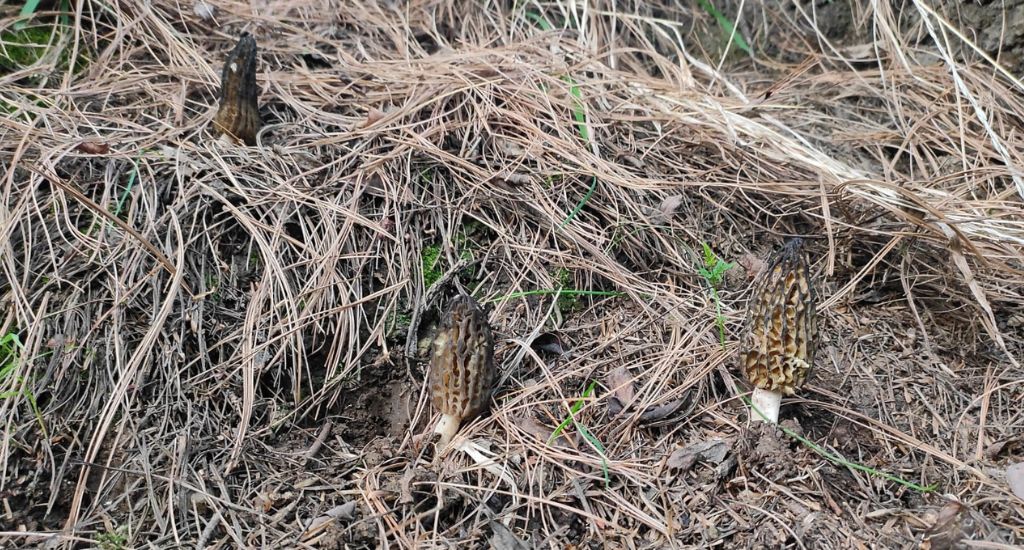
Impact of climate change on Kashmir’s mushroom pickers
Unpredictable weather patterns, early springs, and above-average temperatures have left gucchi mushroom hunters in distress, facing another season of low yield for the second consecutive year.

Unpredictable weather patterns, early springs, and above-average temperatures have left gucchi mushroom hunters in distress, facing another season of low yield for the second consecutive year.
When the Celsius hits 15 to 20 degrees in the daytime, it’s the perfect time of year for “gucchi” to start springing up in the Himalayas of Jammu and Kashmir. Soil temperatures warm, and competition to find the tasty, coveted fungi heats up.
The gucchi mushroom, the local name for morel, is prized by professional chefs and amateur foodies alike for its nutty, earthy flavour. The mushroom is often coveted, not only for its taste but because it is very difficult to find.
The truffle-like fungi can fetch prices upward of Rs 40,000 a kg due to their scarcity and short growing season. So, in the world of morels, much like in fishing and game hunting, the whereabouts of fruitful caches are kept secret.

Where’d you find them? The vast majority of each yearly crop is collected in the wild – mostly in the mountains of Ramban, Kupwara and Anantnag districts. But where exactly those wild mushrooms will pop up is largely a guessing game.
Ominous skies and the threat of a torrential downpour do not keep determined morel pickers Waseem Ahmad and Mehaj-u-Din Khatana – both in their thirties – out of the mountains. They slip quietly into the woods at first light. Many others like them from Harwan on the outskirts of Srinagar are on the trail too.
It’s clear the hunters are acting in secrecy to keep their favourite locations hidden. And a few occasionally glance nervously over their shoulders to see if anybody is watching them. Others take a more nonchalant approach as if on a stroll before quickly sidestepping off a trail and disappearing in the brush.
Also Read | Kashmir’s farmers switch from growing apples to exotic greens
Gucchi mushrooms are difficult to spot on the wooded floor and often blend perfectly with their surroundings. But their spongy and honeycomb-looking top gives them a distinctive appearance.
The morel’s short growing period proves to be a moneymaker.
“I have been in this seasonal trade for over a decade now. If luck favours us, we can earn around Rs 70,000 or more,” said Khatana.
Ideal weather conditions for the great morel are when daytime Celsius is between 15 and 20 and night-time temperatures are in the five to nine. They can normally be found on southerly slopes and sunny areas before showing up on the northern side of hills or in the shade.

“With each new season, we have to explore different tracks since the wild mushrooms do not grow in the same spot every time,” explains Khatana.
The general rule of thought is that when it finally starts warming up, and there’s a shower, that triggers them to pop up.
“Traditionally, we wait for thunder and rain to allow the mushrooms to sprout. Whenever it rains in late spring and early summer, the next morning I go out to collect the mushrooms in the nearby forests with my friend,” said Khatana, detailing the intricacies of the trade.
Gucchis can vary in colour from blonde to dark black, and sometimes the best way to spot them is by kneeling, crouching or changing the perspective. Above all, it’s crucial to be certain what is being picked is a morel. False morels and other lookalikes can make people sick.
Gucchis are weather dependent, triggered by the temp and moisture. The past few years have been bad for pickers of morel mushrooms in Jammu and Kashmir.
Also Read | In Kashmir’s ‘Antarctica’
The region experienced above-average temperatures and reduced rainfall during March and April last year. The pattern repeated this year in March too. The erratic spring weather is making it difficult to pinpoint the brief hunting season for gucchi.
“My collection has reduced to just a few hundred grams in the past two years. This was my seasonal occupation, but now I have almost lost it,” said Sajad Famada. Sajad is a youth from the Gujjar village of Mulnar in the Dachigam area. Gujjars living in the mountains are known as skilled morel hunters.
Mushroom trader Mushtaq Ahmad of downtown Srinagar confirms the reduction in supplies. “On average, I used to procure 70-80 kilograms of gucchi every year, but as in the previous year, the figure will hardly reach 30 kilograms this season.”

According to experts, gucchi is becoming rarer because of climate change, deforestation, and habitat destruction. The Jammu and Kashmir forest department data shows morel mushroom production has shrunk from 2,000 quintals in 1991 to around 45 quintals in 2021.
Rouf Hamza Boda, a botanist from south Kashmir, says wild mushrooms are sprouting early because of climate change, “sometimes as early as February when the terrain is still slippery due to snow and moisture”.
As there’s nobody to pick them then, the second-best fungi in the world – second only to the truffle – and one of the most expensive mushrooms in the world go to waste in the jungles.
Also Read | Death on the tail of migratory birds in Kashmir
The lead image at the top shows the spongy and honeycombed gucchi mushrooms (Photo by Nasir Yousufi)
Nasir Yousufi is a journalist based at Srinagar.